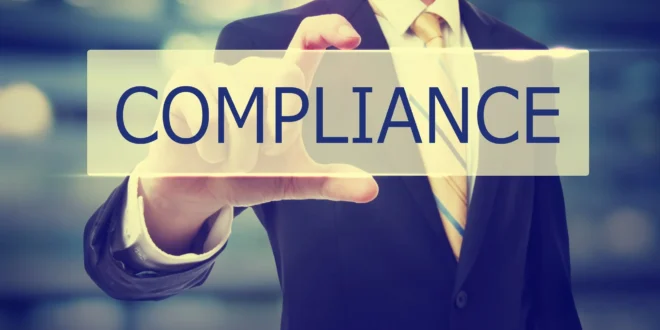Did you know that projections show global IT spending will reach $4.6 trillion this year?
With a significant investment in IT, organizations must have an effective compliance policy. This is to ensure that their digital infrastructure remains secure.
A robust IT compliance policy helps protect sensitive data and maintain business continuity. It also avoids costly fines for non-compliance. However, creating one can be overwhelming. Where do you start? What should you include?
In this guide, we will discuss the top practices for creating an IT compliance policy. Read on to learn more.
- Understand IT Compliance
- Identify Applicable Laws and Regulations
- Choose an IT Compliance Framework
- Conduct a Risk Assessment
- Train and Educate Employees
- Monitor and Audit
- Use Manage IT Services
- Develop a Compliance Calendar
- Establish a Compliance Committee
- IT Compliance Policy: Maintaining Regulatory Standards
Understand IT Compliance
First, let’s define what IT compliance means. It refers to adhering to laws, regulations, and industry standards related to IT. These can include:
- Data protection laws
- Security frameworks
- Organizational policies
The goal is to ensure that digital assets are secure and being used for legitimate purposes. It also helps to build trust with customers. This is done by demonstrating a commitment to protecting their information.
Identify Applicable Laws and Regulations
The first step in creating a compliance policy is to identify the laws and regulations. These can vary based on location, industry, and type of data collected or stored.
Some common examples include:
- GDPR for organizations operating within the European Union
- HIPAA for healthcare providers
- SOX for publicly traded companies
These laws help you design protocols that meet specific legal and industry standards. This reduces the risk of violations and associated penalties.
It also guides your IT team in defining the data handling and security procedures. This plays a significant role in mitigating potential threats.
Keep in mind that these laws are constantly evolving. It’s essential to stay up-to-date on any changes that may impact your business.
Choose an IT Compliance Framework
A compliance framework offers a structured approach to managing IT security and vulnerabilities. It outlines the best practices and procedures to protect your data.
Some popular options include:
- ISO 27001 for information security management
- NIST Cybersecurity Framework for Risk Management
- PCI DSS for credit card data protection
They can provide a solid foundation for your IT compliance efforts. These frameworks are designed to address a comprehensive list of potential risk factors. They provide guidelines on how to effectively manage those risks.
Conduct a Risk Assessment
A risk assessment is a crucial step in creating a compliance policy. It helps you identify potential vulnerabilities. This helps you assess how likely they are to occur and what impact they may have on your organization.
The assessment should cover all areas of your digital infrastructure. It should include hardware, software, networks, and data storage.
This will help you focus on the risks based on their severity. This will also aid in taking appropriate measures to mitigate them.
Risk assessments also facilitate the establishment of contingency plans. It ensures preparedness and resilience in the face of potential breaches.
It can also help uncover new vulnerabilities resulting from evolving digital landscapes. This helps in keeping the compliance policy up-to-date and relevant.
Train and Educate Employees
Training employees creates a culture of security and compliance within the organization. A well-informed staff can act as a critical line of defense against security breaches. This reduces the risk of incidents caused by human error.
Regular training also ensures that your staff stays updated. This also helps them with IT policy adherence. This fortifies your organization’s IT compliance.
Employees should also be educated on the consequences of non-compliance. This ensures that everyone understands their responsibility towards IT compliance. It also makes it more effective in safeguarding your digital resources.
Monitor and Audit
Continuous monitoring enables organizations to maintain a real-time understanding of their IT environment. It allows quick detection and response to any violations of established policies.
By tracking IT systems, organizations can identify any deviations from the compliance frameworks. This fosters a proactive mitigation of potential risks.
Audits also offer an assessment of the organization’s adherence to its compliance policy. It pinpoints areas of improvement and verifies the effectiveness of current controls. It also ensures the organization’s digital assets are always under vigilant watch.
Use Manage IT Services
Utilizing managed IT services for your compliance efforts offers several distinct advantages. They possess in-depth knowledge of various industry regulations and compliance standards. This equips them with the best practices tailored to your organization’s unique needs.
These services can also take charge of implementing and maintaining your compliance policy. This frees up your internal team to focus on other strategic initiatives.
They leverage cutting-edge technology and automation to monitor the IT environment continuously. This enables rapid identification and resolution of compliance issues.
Co-managed IT services also offer 24/7 support for your digital infrastructure. This helps to mitigate any issues that may arise. They can also assist in creating an effective compliance policy for your organization.
Develop a Compliance Calendar
A compliance calendar is a useful tool for keeping track of important dates. This can include reporting deadlines, training sessions, and audits. It ensures that no crucial compliance task is overlooked.
It also provides a clear overview of upcoming events and deadlines. This allows organizations to plan and allocate resources accordingly. It also helps in identifying any potential conflicts or overlapping tasks.
Establish a Compliance Committee
A compliance committee can provide a holistic perspective on compliance. It encourages cross-departmental collaboration. It also ensures that compliance considerations are integrated across all organizational activities.
The committee can also assist in creating, updating, and enforcing the compliance policy. They can act as a central point of contact for any compliance-related queries or concerns. It also helps in promoting a culture of compliance throughout the organization.
IT Compliance Policy: Maintaining Regulatory Standards
An effective IT compliance policy is essential for protecting an organization’s digital assets. It also helps them maintain regulatory standards in the world of IT. By following these practices, companies can create compliance policies for their unique needs.
Remember, compliance is not a one-time task. It is a continuous effort that requires updates to stay relevant and effective. Keep monitoring and adapting to ensure your organization remains compliant with applicable laws.
Don’t forget to explore our other articles. There’s a wealth of knowledge waiting for you on our site.
 SlushWeb Bringing Facts to Light
SlushWeb Bringing Facts to Light



